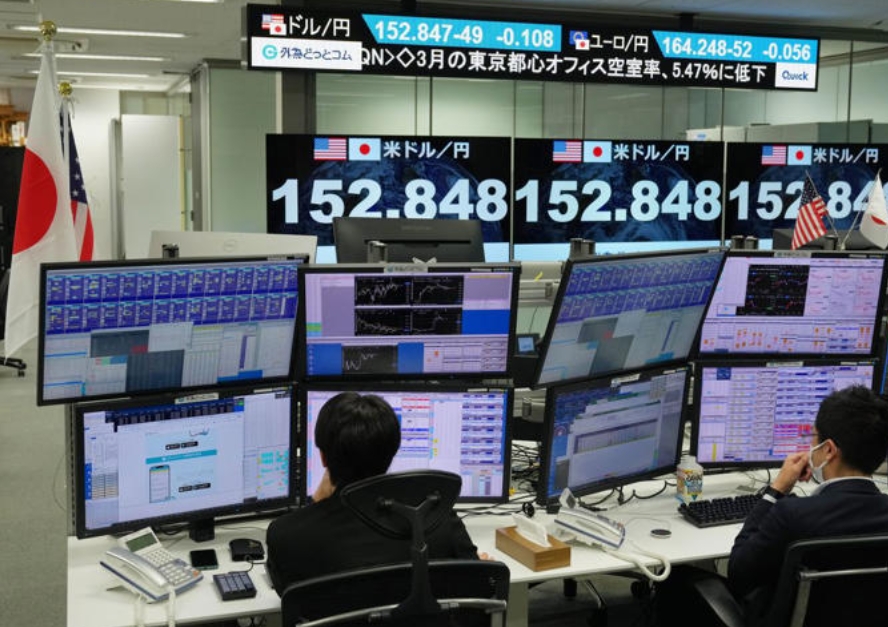发布日期:2024-04-14 浏览次数:59
Wall Street and Washington weren’t the only places that got a jolt recently—officials in Tokyo have an even thornier dilemma on their hands.
Hotter-than-expected U.S. inflation has shaken up expectations for the Federal Reserve to cut interest rates three times this year. That has sent ripples across the Pacific, driving the Japanese yen to its weakest level against the dollar in nearly 34 years and putting the country’s central bank in a bind.
Much of what drives the foreign-exchange market is the difference in countries’ bond yields, which helps explain why the yen has lost a third of its value since the end of 2020. The Bank of Japan, which just raised interest rates last month for the first time in 17 years, now faces a tough choice: Should it tighten more quickly to stem the yen’s decline or just stay put? Japanese government officials have lately expressed unease at the yen’s rapid drop.

A temporary solution could be another short-term fix in the form of expensive intervention. Japan spent the equivalent of $60 billion to support the yen in 2022 when the currency was hovering at around 150 versus the dollar. The currency rebounded in the following months, but then resumed its descent.
The yield gap between 2-year government bonds of the U.S. and Japan has widened by 0.56 percentage point since the beginning of February, and that is entirely down to the rise in U.S. yields. Japanese yields actually have gone up 0.18 percentage point during the period.
A currency intervention could prop the yen up in the short term, but over the long term the exchange rate will be driven by interest-rate differentials. At the beginning of this year, the market was expecting that converging interest rates between the U.S. and Japan could finally turn the tide for the yen. While the Bank of Japan did raise rates, it didn’t give any indication of the pathway for future increases.
The Bank of Japan has long been hesitant to raise rates too quickly. It kept its negative interest-rate regime over the past few years when most other major central banks were raising them. It could take matters into its own hands and allow its bond yields to rise. Unlike the Fed, which is unwinding its bondholdings, the Bank of Japan continues to be a buyer. But in a country with massive government borrowings of its own and companies and consumers accustomed to low rates, that could prove jarring to government and private finances.
The risk now is that a weaker yen could push inflation back up in Japan by raising the cost of its substantial food and energy imports. But after decades of deflation, the Bank of Japan has also showed a willingness to tolerate that. Japan’s headline inflation was 2.8% in February, down from 4.3% in January last year.
Just like most economists on Wall Street and investors everywhere, officials in Tokyo had been expecting multiple U.S. cuts to ride to the rescue this year. Now it looks increasingly likely that help won’t be on the way anytime soon. That likely means sustained weakness in the yen, and more inflation in a country not accustomed to it.
The Wall Street Journal
Facebook homepage → (5) Facebook